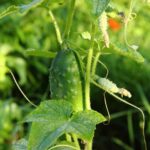Growing your own vegetable garden is not only a rewarding experience but also a significant step towards contributing to health, the environment, and sustainability. In this section, we will explore the benefits of growing vegetable gardens and their impact on our well-being and the world around us. From improving physical health through access to fresh produce to reducing carbon footprint by growing locally, there are numerous advantages to cultivating your own veggies.
When it comes to choosing the right location for your vegetable garden, factors such as sunlight, soil quality, and accessibility play a crucial role in ensuring a successful harvest. We will delve into these considerations and provide guidance on finding the perfect spot for your garden.
In addition, we will discuss selecting the best vegetables to grow based on climate, space availability, and personal preferences. Whether you’re a novice or seasoned gardener, there’s always something exciting about the prospect of nurturing plants that yield tasty rewards. So get ready to roll up your sleeves and dig into our comprehensive guide on growing vegetable gardens.
Selecting the Right Location for Your Vegetable Garden
When it comes to starting your own vegetable garden, one of the most crucial factors to consider is the location. The right spot can make all the difference in the success of your garden. Here are some important considerations when selecting the perfect location for your vegetable garden:
Factors to Consider When Choosing the Perfect Spot for Your Garden:
1. Sunlight: Ensure that your chosen location receives an adequate amount of sunlight throughout the day. Most vegetables require at least 6 hours of direct sunlight, so it’s essential to pick a spot that meets this requirement.
2. Soil Quality: Check the soil quality in your chosen location. The soil should be well-draining and rich in nutrients to support healthy plant growth. Consider conducting a soil test to determine its pH level and nutrient content.
3. Accessibility: Choose a location that is easily accessible for planting, watering, and harvesting. It should also be convenient for regular maintenance tasks such as weeding and pest control.
After considering these factors, you’ll be able to select the ideal location for your vegetable garden that will ensure the healthy growth of your plants and a bountiful harvest.
By carefully choosing the right location for your vegetable garden, you can set yourself up for success and enjoy a thriving garden full of fresh and nutritious produce.
Choosing the Best Vegetables to Grow
When it comes to choosing the best vegetables to grow in your garden, there are several factors to consider. Whether you’re a seasoned gardener or a beginner, selecting the right vegetables can make all the difference in the success of your garden. Here are some tips for choosing the best vegetables to grow:
- Consider your climate: Certain vegetables thrive in specific climates, so it’s important to choose varieties that are well-suited to your local weather conditions. For example, leafy greens like lettuce and spinach are perfect for cooler climates, while tomatoes and peppers prefer warmer temperatures.
- Think about space: If you have limited space in your garden, opt for vegetables that don’t take up a lot of room. Radishes, green beans, and herbs like basil and oregano are great options for small gardens or containers.
- Take personal preferences into account: Think about what you and your family enjoy eating. Growing vegetables that you love will make the gardening experience more enjoyable and rewarding. If you’re a fan of salads, consider planting cucumbers, cherry tomatoes, and bell peppers.
Once you’ve considered these factors, it’s time to start planning your vegetable garden. Remember that with proper care and attention, even beginners can successfully grow a variety of delicious and nutritious vegetables right in their own backyard.
When it comes to selecting the best vegetables for your garden, doing some research is key. There are plenty of resources available that provide information on the easiest and most rewarding vegetables to grow. Additionally, seeking inspiration from popular TV shows or YouTube channels can be a great way to learn new techniques and gain valuable insight into successful vegetable gardening.
Whether you’re a fan of reality TV shows that feature competitive gardening challenges or prefer instructional YouTube channels hosted by experienced horticulturists, there is no shortage of entertaining and educational content available. By incorporating some inspiration from these resources into your own gardening practices, you can create a thriving vegetable garden that yields an abundance of fresh produce throughout the growing season.
Preparing the Soil for Planting
Steps to Ensure Nutrient-Rich Soil
Before starting your vegetable garden, it is crucial to prepare the soil to ensure that it is nutrient-rich and ready for planting. One of the first steps is to remove any debris, rocks, or weeds from the area where you plan to plant. This will create a clean canvas for your vegetable garden.
Next, consider using organic matter such as compost or manure to add nutrients to the soil. This will help provide essential elements for the growth of healthy and productive plants.
Techniques for Soil Testing and Improvement
Testing the soil before planting is also important to determine its pH levels and nutrient content. You can use DIY test kits available at most gardening stores or send samples to a professional lab for analysis. Based on the results, you can adjust the pH levels by adding lime or sulfur as needed. Additionally, incorporating organic fertilizers or other soil amendments based on the test results can also improve soil quality before planting.
Importance of Healthy Soil for Vegetable Gardens
Healthy soil is vital for the success of your vegetable garden. Well-prepared and nutrient-rich soil provides a solid foundation for your plants to grow strong and produce bountiful harvests. It also promotes good drainage and proper root development, which are essential for overall plant health. By following these steps and techniques for preparing the soil, you can ensure optimal conditions for your vegetable garden to thrive.
Planting and Seedling Care
Once you have selected the best location for your vegetable garden and prepared the soil, it is time to start planting your seeds or seedlings. Planting and caring for seedlings require attention to detail and proper techniques to ensure successful growth. The following tips will guide you through this important stage of vegetable gardening.
First, it is essential to follow the instructions on the seed packets or plant labels regarding planting depth, spacing, and watering requirements. Different vegetables may have specific needs when it comes to planting, so it is crucial to research each type of plant before getting started. Additionally, proper watering is key during this stage – water the plants gently but thoroughly immediately after planting.
As your seedlings begin to grow, regular care and maintenance are necessary to ensure healthy development. This includes consistent watering, fertilizing as needed, and protecting the plants from pests or diseases. Mulching around the seedlings can help retain moisture in the soil and prevent weed growth.
During this stage, it is important to monitor the growth of your seedlings closely. Look out for any signs of stress or disease and address them promptly. Pruning may also be necessary to encourage strong and healthy growth as your vegetables continue to develop.
| Vegetable | Planting Depth | Spacing |
|---|---|---|
| Tomatoes | 1/4 inch (6 mm) | 18-36 inches (45-90 cm) apart |
| Lettuce | 1/8 inch (3 mm) | 12 inches (30 cm) apart |
| Zucchini | 1 inch (2.5 cm) | 3-4 feet (90-120 cm) apart |
By following these guidelines for planting and caring for seedlings, you will set a strong foundation for a successful vegetable garden. Remember that each type of vegetable may have specific requirements, so be sure to do thorough research on each variety you plan to grow in your garden.
Maintenance During the Growing Season
Managing Weeds, Pests, and Diseases
During the growing season, it is essential to stay on top of managing weeds, pests, and diseases to ensure the health and growth of your vegetable garden. Weeds can easily compete with your vegetables for resources like water and nutrients. Regular weeding by hand or using mulch can help keep the weeds at bay.
Additionally, be sure to monitor for any signs of pests or diseases that can quickly spread and damage your plants. Consider using natural methods of pest control such as introducing beneficial insects or using organic pesticides to protect your vegetable garden without harmful chemicals.
Pruning and Ensuring Healthy Growth of the Plants
Proper pruning is important for promoting healthy growth in your vegetable garden. Each type of vegetable may require different pruning techniques to encourage optimal production. For example, tomatoes often benefit from regularly removing suckers that sprout from the main stem in order to direct energy into fruit production.
Similarly, ensuring adequate support for vining plants like peas or cucumbers can help prevent plant stress and improve overall yield. Regularly inspecting your plants for any signs of distress and addressing them promptly can make a significant difference in the health and productivity of your vegetable garden.
Bonus Section: Shows on How to Grow Vegetable Gardens
For additional guidance and inspiration on how to grow vegetable gardens, there are numerous TV shows, YouTube channels, and documentaries available that offer valuable insight into successful gardening practices. From popular reality TV shows focused on sustainable living and gardening to informative channels hosted by experienced horticulturalists, there is an abundance of content showcasing various techniques for cultivating thriving vegetable gardens.
These resources not only provide practical advice but also serve as a source of motivation for both beginner and experienced gardeners looking to expand their knowledge and capabilities when it comes to growing their own fresh produce.
Harvesting and Preserving Your Vegetables
Once your vegetable garden is thriving, it’s time to enjoy the fruits of your labor. Knowing when and how to harvest different vegetables is crucial to ensure they are at their peak flavor and nutritional value. For example, tomatoes should be picked when they are fully colored but still firm, while lettuce should be harvested before it becomes too bitter. Harvesting at the right time will give you the best-tasting vegetables for your table.
After harvesting, it’s important to properly preserve and store your vegetables in order to enjoy them for as long as possible. Techniques such as canning, freezing, and pickling can help extend the shelf life of your produce. Additionally, storing your vegetables in a cool, dark place can also help keep them fresh longer. Proper preservation ensures that you can continue to enjoy the fruits of your labor long after the growing season has ended.
In addition to preserving your harvest for personal enjoyment, consider sharing any surplus with friends or donating to local food banks or community organizations. This not only reduces waste but also helps others benefit from the abundance of your vegetable garden.
| Vegetable | Harvesting Time |
|---|---|
| Tomatoes | Fully Colored But Firm |
| Lettuce | Before It Becomes Bitter |
Bonus Section
In conclusion, growing vegetable gardens is an important and rewarding activity that has numerous benefits for both individuals and the environment. It provides an opportunity to enjoy fresh, organic produce, promotes healthy eating, and reduces the carbon footprint by cutting down on food transportation.
Additionally, gardening helps improve soil quality, supports biodiversity, and contributes to a more sustainable way of living. By following the outlined steps for selecting the right location, choosing the best vegetables to grow, preparing the soil, planting and caring for seedlings, maintaining the garden during the growing season, and harvesting and preserving the vegetables, anyone can create a successful vegetable garden.
One valuable resource to gain further knowledge and inspiration for growing vegetable gardens is through various shows and documentaries focused on this topic. These sources provide practical tips and techniques while showcasing beautiful gardens and successful harvests.
They also offer a wealth of information on mastering different aspects of gardening such as plant care, pest control, composting, and more. By watching these shows or subscribing to related YouTube channels, individuals can learn from experienced gardeners and gather ideas for their own vegetable garden.
Whether it’s seeking guidance on starting a garden from scratch or honing existing skills in vegetable gardening, these shows are packed with valuable content that can benefit beginners as well as seasoned gardeners. From traditional TV shows to informative online channels, there’s no shortage of resources available to help individuals succeed in growing their own thriving vegetable gardens.
By tapping into this wealth of knowledge offered by reputable shows on how to grow vegetable gardens enthusiasts can take their gardening journey to new heights with confidence.
Frequently Asked Questions
Are There Any Gardening Shows on Discovery Plus?
Yes, Discovery Plus offers several gardening shows that cater to both novice and experienced gardeners. From instructional series to showcases of stunning gardens, there is a variety of options for gardening enthusiasts.
Is There a Show About Plants?
There are indeed shows on Discovery Plus that focus specifically on plants. These shows often delve into the care, cultivation, and characteristics of different plants, providing valuable information for anyone looking to expand their knowledge of plant life.
How Do You Grow a Vegetable Garden for Dummies?
Growing a vegetable garden for beginners can seem daunting, but it doesn’t have to be complicated. Start by selecting easy-to-grow vegetables like tomatoes, lettuce, and radishes. Choose a sunny spot with well-drained soil and water regularly.
It’s also helpful to do some research or watch instructional videos to learn the basics of vegetable gardening. With some patience and effort, even beginners can successfully grow their own vegetables.

If you’re looking to get into vegetable gardening, or are just looking for some tips on how to make your current garden better, then you’ve come to the right place! My name is Ethel and I have been gardening for years. In this blog, I’m going to share with you some of my best tips on how to create a successful vegetable garden.





